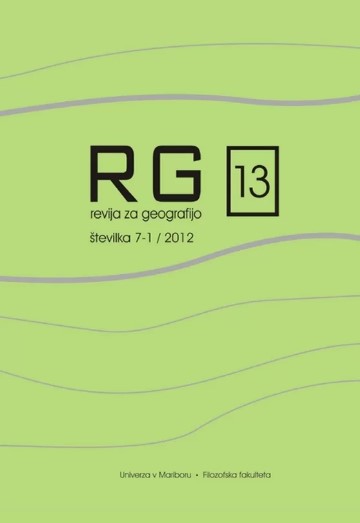Mentor teachers' perceptions about their ability to teach geography through interactive whiteboards
DOI:
https://doi.org/10.18690/rg.7.1.3853Keywords:
interactive whiteboard, teacher, geographyAbstract
In this paper we present some of the trends of introducing interactive whiteboards in teaching geography in terms of both the comparison of Slovenian schools equipped with interactive whiteboard signs as their availability and actual involvement in teaching geography. The opinions of students mentor teachers in geography teaching practice, who participated in a short pilot qualitative survey, showed how they assess their current skills of teaching geography using the interactive whiteboards and what their experiences are. Collected opinions suggest that the surveyed teachers of geography are according to the five-step scale of the process of learning strategies using interactive tablets (Hooper in Rieber 1995) at the beginning: the familiarization phase and phase of use. Only individuals are reaching the level of integration: everyday usage of the interactive whiteboard, which became their way of everyday teaching. But no one expressed the view that they are developing new teaching strategies (5th step), which are based on their personal knowledge and experiences that are adjusted to the diverse individual needs of students.
Downloads
References
Bačnik, A. 2008: Didaktični potencial interaktivnih tabel. Vzgoja in izobraževanje, 39/5, str. 20-24. Ljubljana.
Bambič, N.2009: Uporaba izobraževalne tehnologije pri pouku v osnovnih šolah. Diplomsko delo, Filozofska fakulteta, Univerza v Ljubljani. Ljubljana.
Beauchamp, G., Parkinson, J., 2005: Beyond the “wow” factor: developing interactivity with the interactive whiteboard. School Science Review 86,316, 97-103.
Bučar, U. 2011: Uporaba interaktiven table pri pouku geometrije v prvem razredu osnoven šole. Magistrsko delo, Pedagoška fakulteta, Univerza v Ljubljani, Ljubljana.
Činkole, T. in Brečko, B. 2010: Šolajoči in IKT 2010. http://www.ris.org. 13/10322/RIS_poročila/_Šolajoči_in_KT_/?&cat=312 (12.2.2012).
Gerlič, I. 2010: Stanje in trendi uporabe informacijske komunikacijske tehnologije (IKT) v slovenskih osnovnih šolah. Letno poročilo o raziskovalni nalogi za leto 2009. FNM. Univerza v Mariboru.
Information and Communication technology in European Education Sytems, Eurydice, 2001. http://promitheas.iacm.forth.gr/i curriculum/ Assets/ Docs/ICT.pdf (11.11.2011)
Hooper, S., Rieber,L., 1995: Teaching with Tehnology. Teaching : theory into practice, Ornstein A.C. (ur). Boston.
Kolnik, K. 2011: Pedagoška praksa študentov geografije- evalvacija dela. Interno gradivo – tipkopis. Oddelek za geografijo, Filozofska fakulteta Univerze v Mariboru.
Konečnik Kotnik, E., Javornik Krečič, M., 2011: Učitelji geografije v poklicnih biografijah o vplivih na svoj profesionalni razvoj. Revija za elementarno izobraževanje, Pedagoška fakulteta Univerze v Mariboru, 4/3, 5-18.
Legard, R., Keegan,J., Ward,K., 2003: In-depth interviews. Qualitative research practice. A guide for social science students and researchers, Ritchie, J. & Lewis, J.(ur), 138-170. Sage Publications. London.
SITES, 2006: Stanje in trendi rabe IKT v izobraževanju v Sloveniji. http://ikt.ris.org/db/36/63/Raziskave_-_doma%C4%8De/PI_(2006) (12.2.2012).
Teich, A., 2009:Interactive Whiteboards Enhance Classroom Instruction and Learning. Nea, Member Benefits. http://www.neamb.com/home/1216_2782.htm (9.3.2012).
Downloads
Published
Issue
Section
License
Copyright (c) 2012 Karmen Kolnik

This work is licensed under a Creative Commons Attribution 4.0 International License.
